You don’t get many Renoir exhibitions these days. Though a key and sometimes much celebrated figure in the development of Impressionism, he has suffered a decisive fall from fashion. ‘Renoir in Guernsey, 1883’ makes clear in its programme notes, however, that it isn’t just a fine art exhibition. Instead, this joint endeavour between the Art for Guernsey charity, Guernsey Museums and the Musée des impressionnismes Giverny is part of ‘a celebration of Guernsey’s character and heritage’. Pierre-Auguste Renoir is still in some ways a funny choice of headline act for an attempt to show the world that there is more to the cultural economy of the second largest Channel Island than offshore finance.
This is, in part, because of his supposed prurience. There is a sense among critics that his paintings of plump and peachy female nudes are too slavering, the brushstrokes along the curve of a bare breast too watchful compared to the freedom of those in the background. Renoir’s son, the film-maker Jean Renoir, made half-hearted protests as far back as 1958 against characterisations of his father doing ‘nothing but talk of nipples and backsides’.
In part, Renoir’s declining reputation is due to related criticisms of his technique. There’s a belief that his composition is shoddy, and that unlike contemporaries such as Monet or Pissarro, he didn’t perceive hitherto unacknowledged combinations of colour in a landscape or scene, so much as impose them – prettifying his subjects with bright greens and sugary pinks. The anti-Renoir movement reached its apotheosis in 2015, with the creation of the Instagram account @Renoir_sucks_at_painting. Its owner Max Geller organised a picket of the Museum of Fine Arts, Boston that year, demanding that they divest themselves of Renoir.
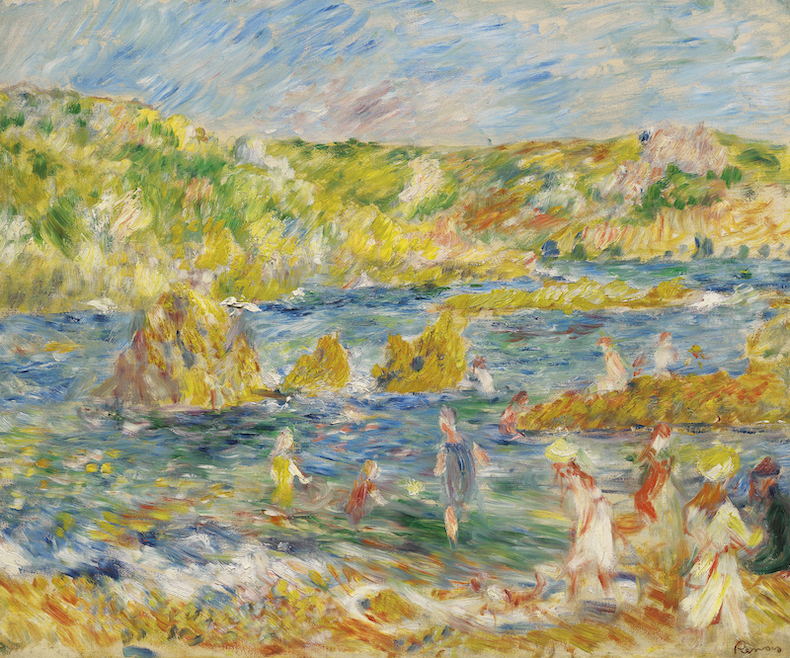
Rocks of Guernsey with Figures (Beach at Guernsey) (1883), Pierre-Auguste Renoir. Private collection
For the purposes of this exhibition, debates over Renoir’s merits fade into an Impressionistic background when compared to the clear lines of his visit to Guernsey with his future wife, Aline Charigot, 140 years ago this September. He produced 15 or so works inspired by his six-week stay. Mostly these are of Moulin Huet Bay on the island’s south coast, where Renoir found himself very taken both with the changing light and the bathers. As he wrote in a letter to Paul Durand-Ruel, ‘you cannot imagine how pretty it all looks, with women and men lying together on the rocks. It’s much more like being in a Watteau landscape than in real life.’
In 2020, Art for Guernsey together with a syndicate of local collectors bought one of the paintings Renoir completed during his visit. Rocks of Guernsey with Figures (Beach at Guernsey) (1883) is a fine study of bathers taking tentative steps into what would have been, at that time of year, a bracing enough high tide; the movement of the light through the water is caught in warm, thick strokes of red and yellow that pick up the yellows of the sands and the reds of the bathers’ hair and skin, amid calm ripples of green and blue.
Guernsey Museums has gathered together some of the remaining Moulin Huet paintings, arranging loans from museums and private collections throughout Europe and the United States. Several Renoir-inspired satellite events orbit ‘Renoir in Guernsey, 1883’, including a relaunch of the Moulin Huet Tearooms as the Renoir Tea Garden. This is not to say that the exhibition at the centre of this jamboree doesn’t attempt to provide new insights into Renoir as well as drum up tourism.
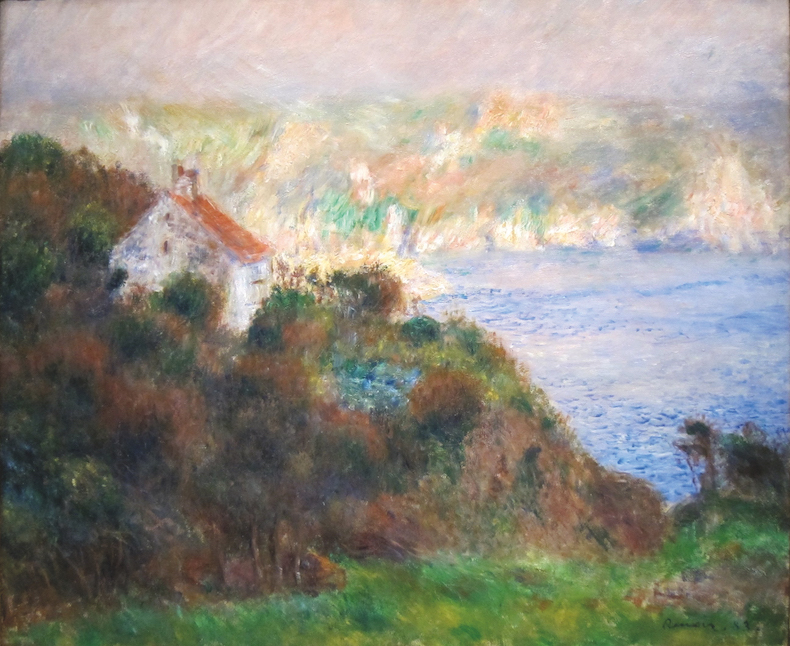
Fog on Guernsey (1883), Pierre-Auguste Renoir. Cincinnati Art Museum
It is organised across two small gallery rooms. The right-hand room displays Rocks of Guernsey. The remaining paintings are collected in the left-hand room. Some, like Moulin Huet Bay, Guernsey (1883) are landscape studies made en plein air. Others, such as Fog on Guernsey (1883), or the blancmange-like nude Bather seated on a rock (c. 1883) are more obviously finished. The exhibition makes a good deal out of this distinction, arguing that his visit to Guernsey marked a turning point in Renoir’s career as he moved from Impressionistic portraits and landscapes to ones painted in a studio from sketches, often foregrounding more classically composed nudes inspired by the bathers in Moulin Huet.
His 1881 visit to Italy, where he viewed Titians and Raphaels, is a more likely source of this classical turn, although the exhibition organisers advance a convincing case that Bay of Salerno (1881) included here, but long attributed to that trip, is in reality of Moulin Huet. Renoir’s style evolved; on the evidence of the finished paintings here, it didn’t improve. More careful compositions allowed him to experiment with differences in scale between figures and landscape, but his Impressionistic studies better express the sensation of being a figure in that landscape. The hazy red you find dappled about the trees in Fog on Guernsey seems decorative, a deliberate attempt to make the scene more appealing. Jean Renoir claimed that after the hostile response among critics and the public to the first Impressionist exhibition in 1874, his father considered going back to his previous work, painting wall decorations for cafés. To an extent, he eventually did.
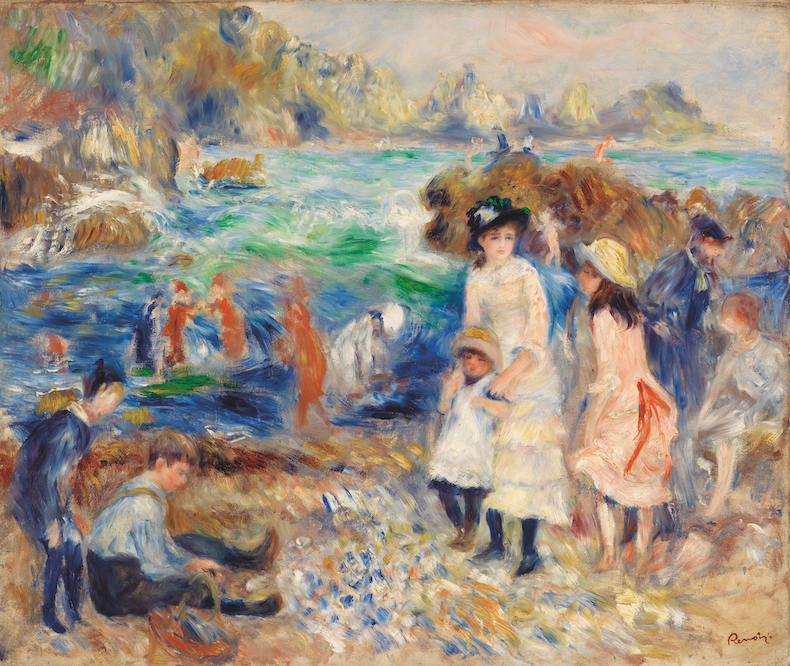
Children by the Sea in Guernsey (1883), Pierre-Auguste Renoir. Private collection
‘Renoir in Guernsey, 1883’ is at Guernsey Museum, Candie, until 17 December.
Unlimited access from just $16 every 3 months
Subscribe to get unlimited and exclusive access to the top art stories, interviews and exhibition reviews.

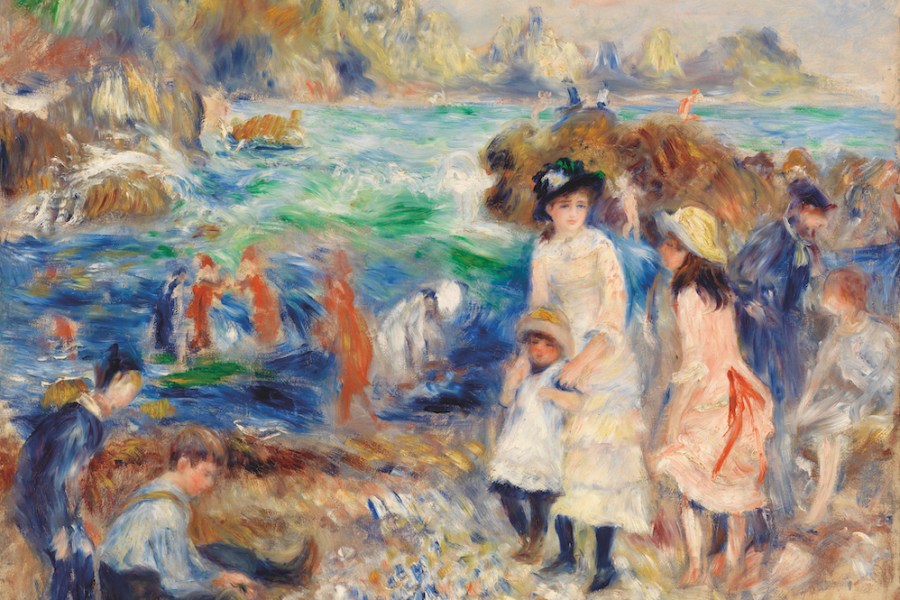
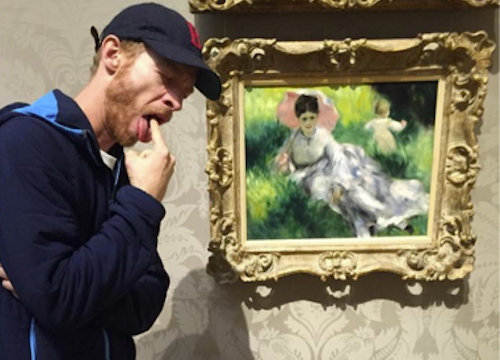
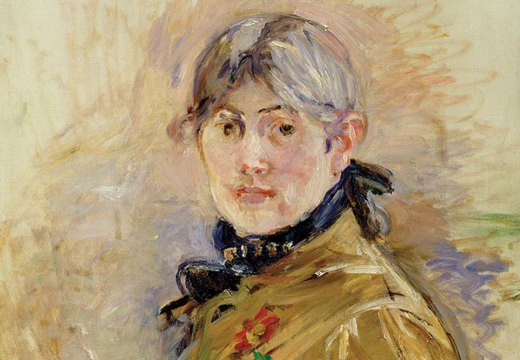
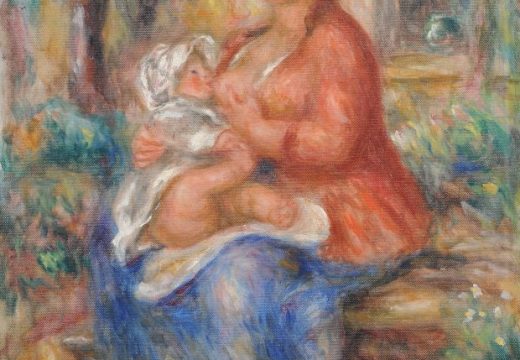









![Masterpiece [Re]discovery 2022. Photo: Ben Fisher Photography, courtesy of Masterpiece London](http://www.apollo-magazine.com/wp-content/uploads/2022/07/MPL2022_4263.jpg)
It’s time for the government of London to return to its rightful home